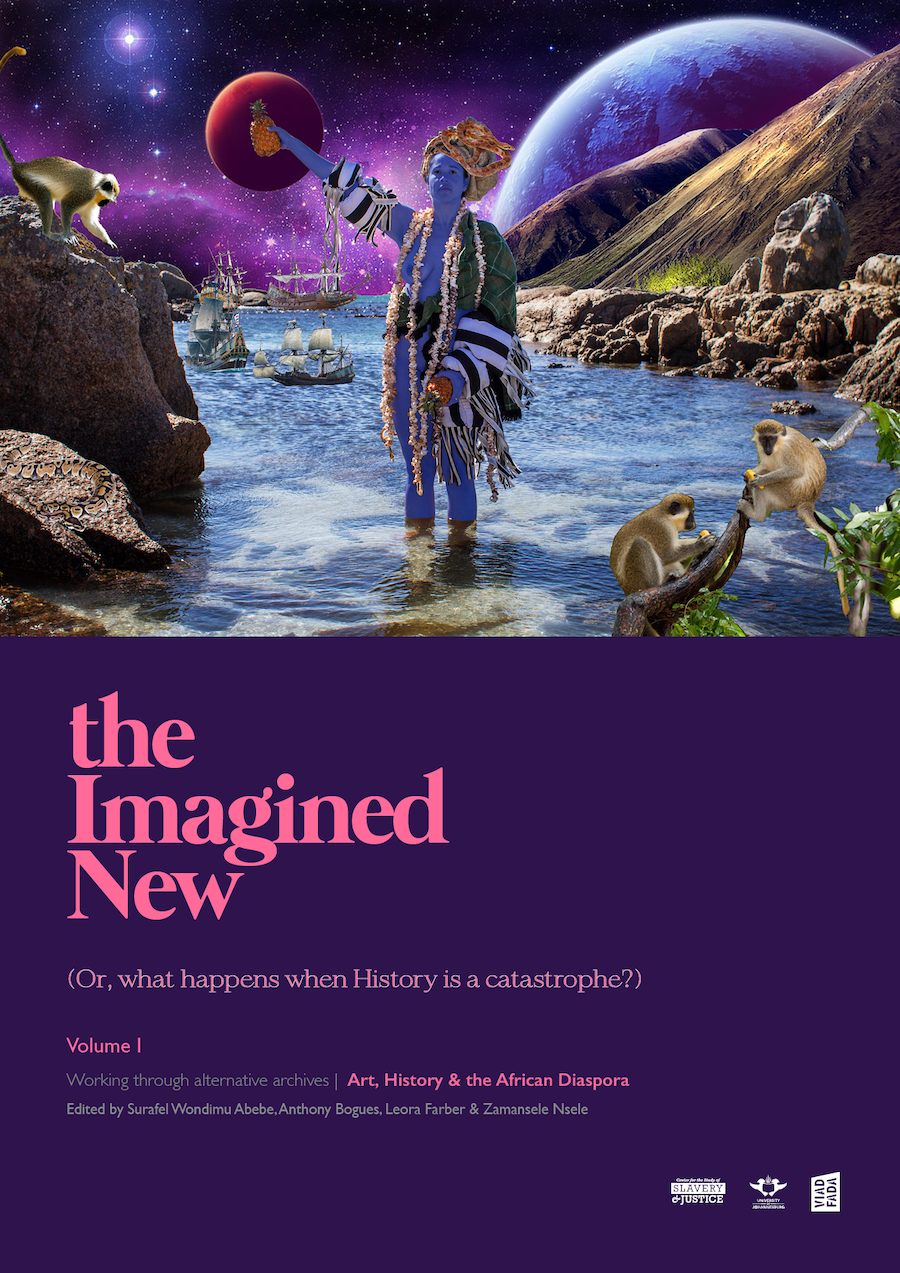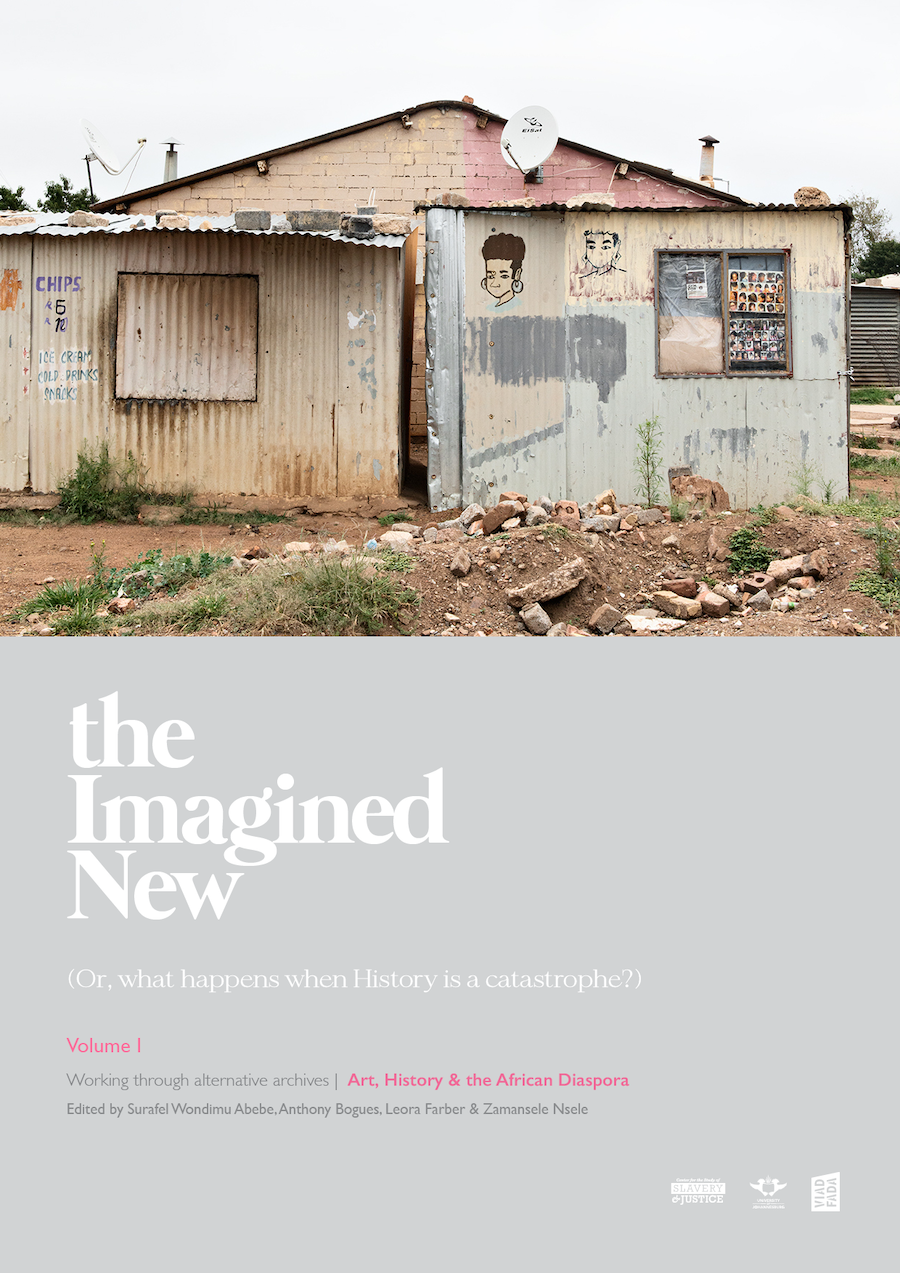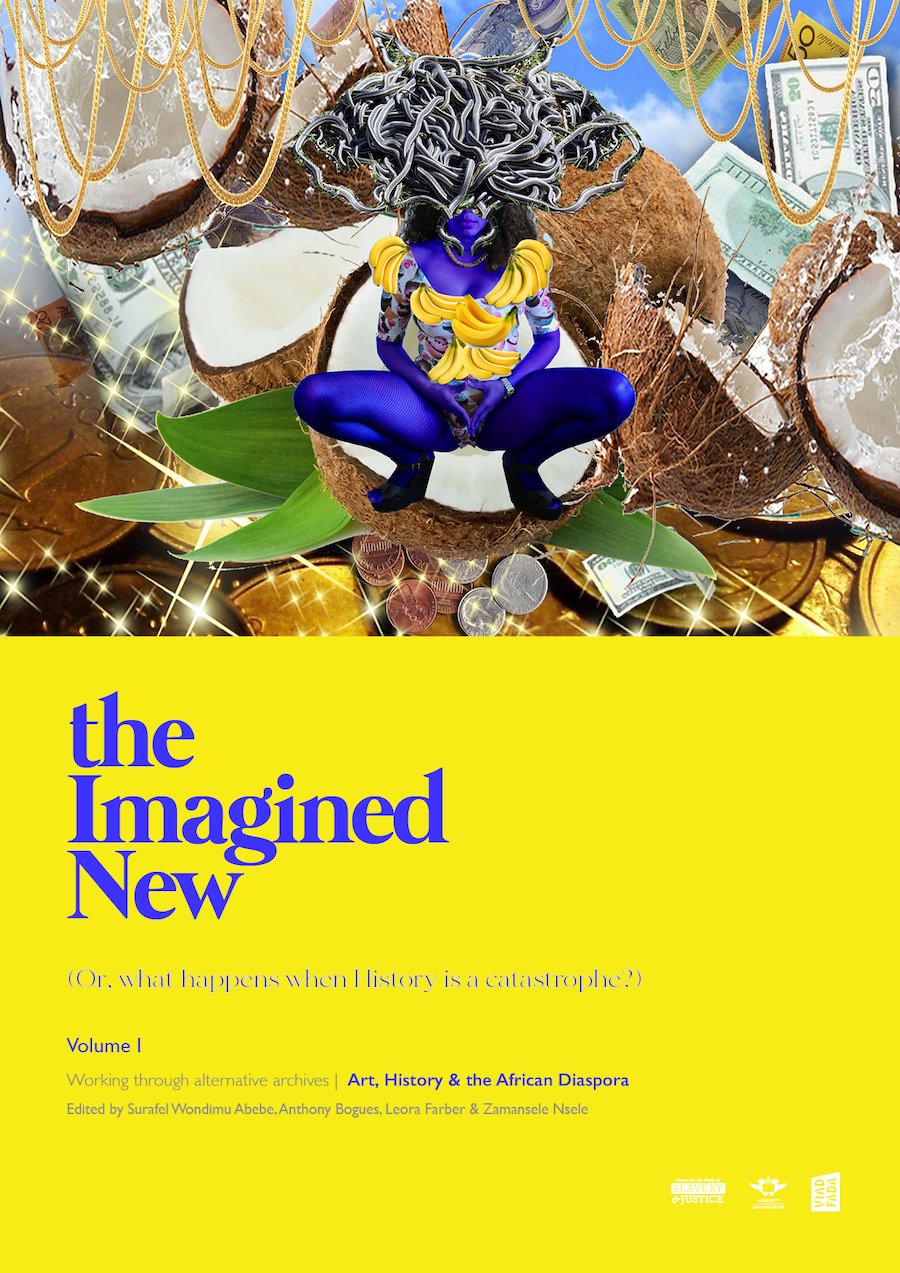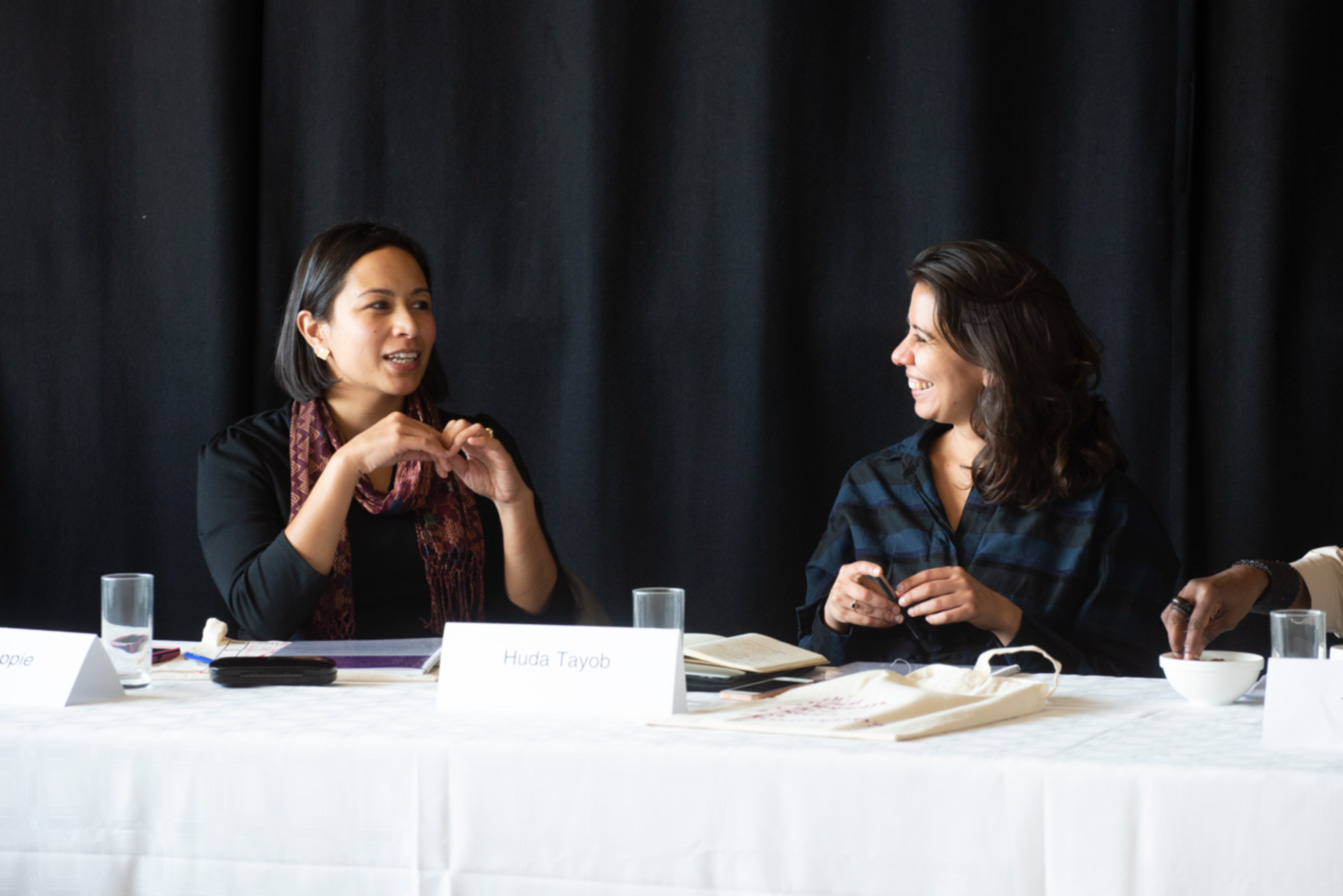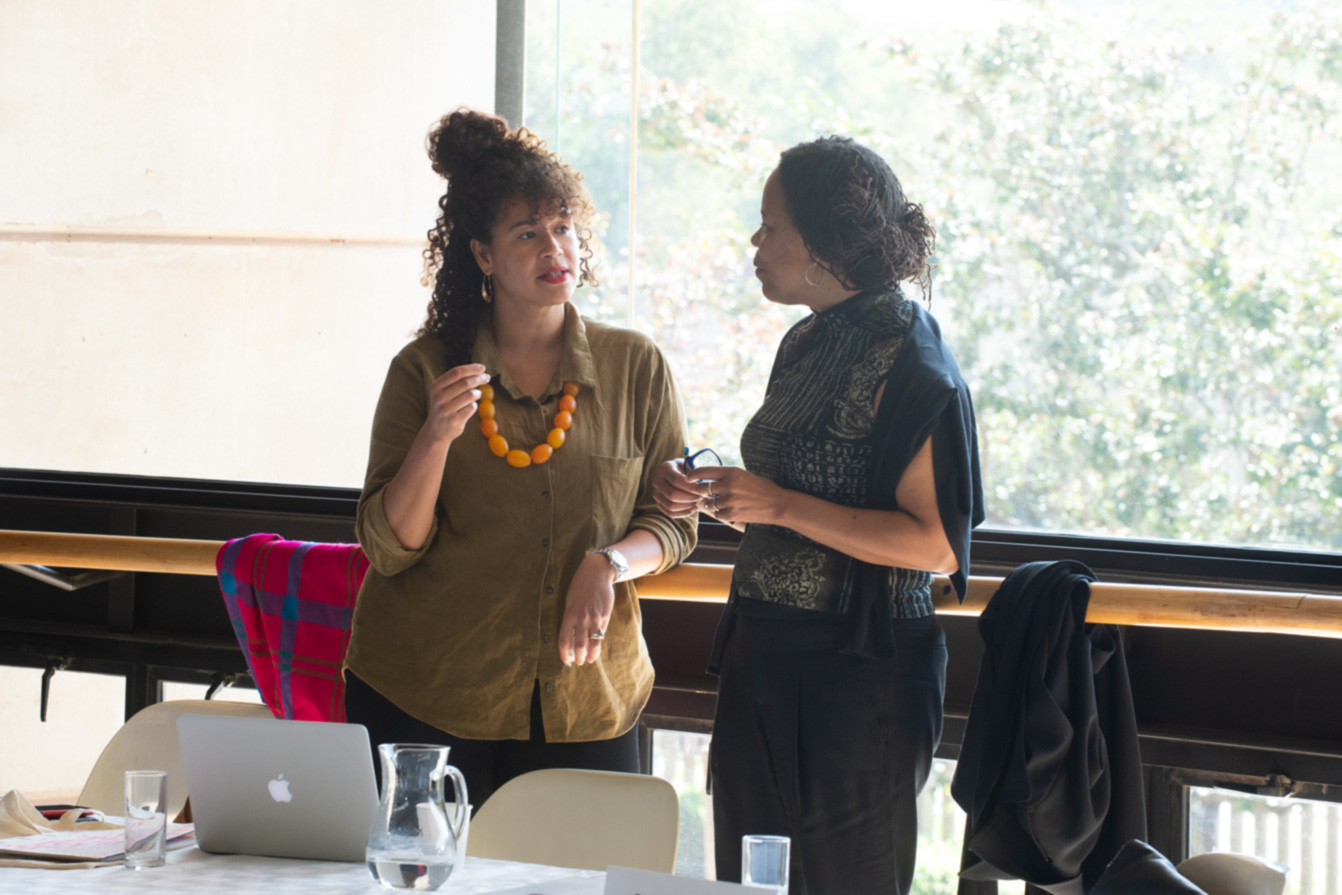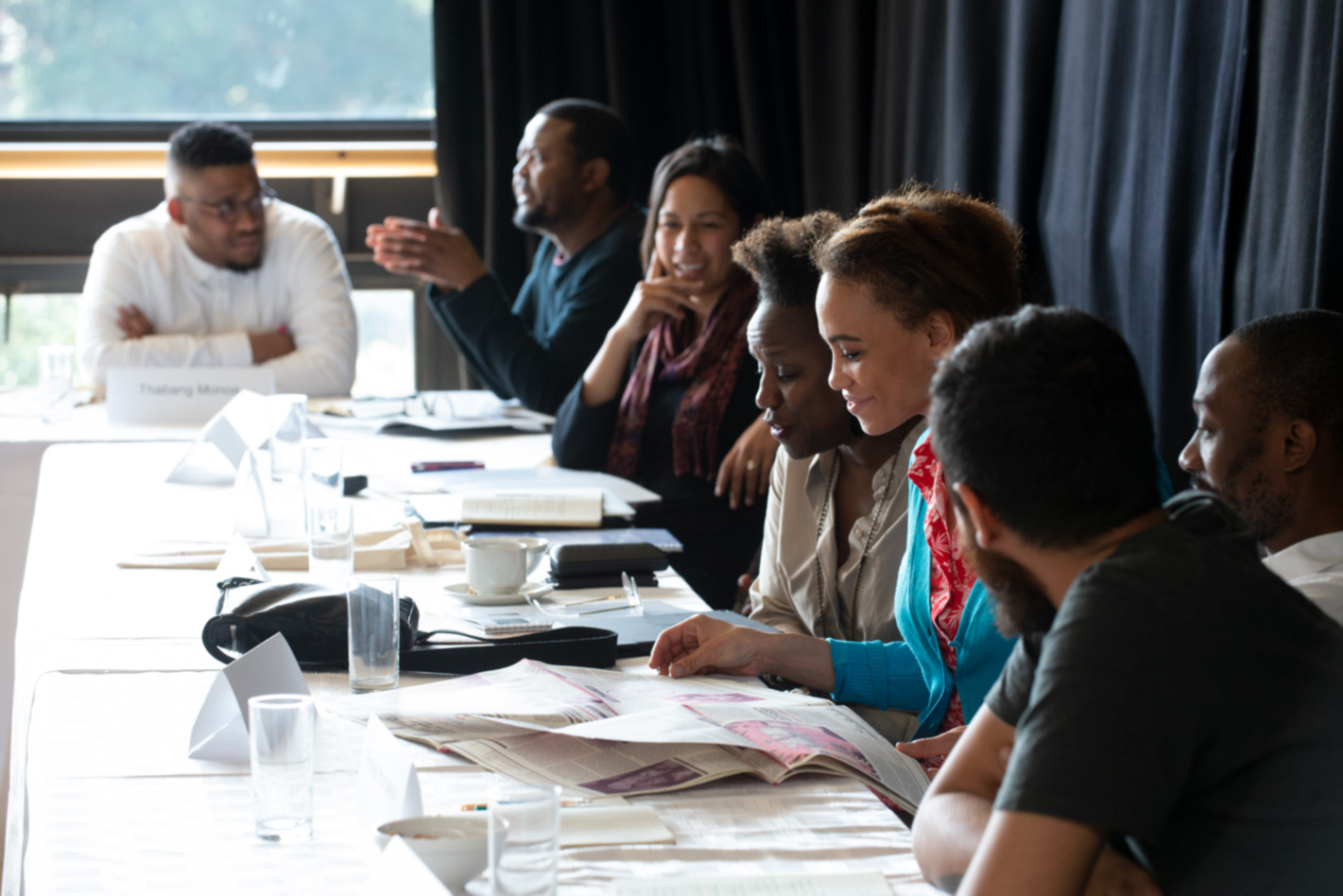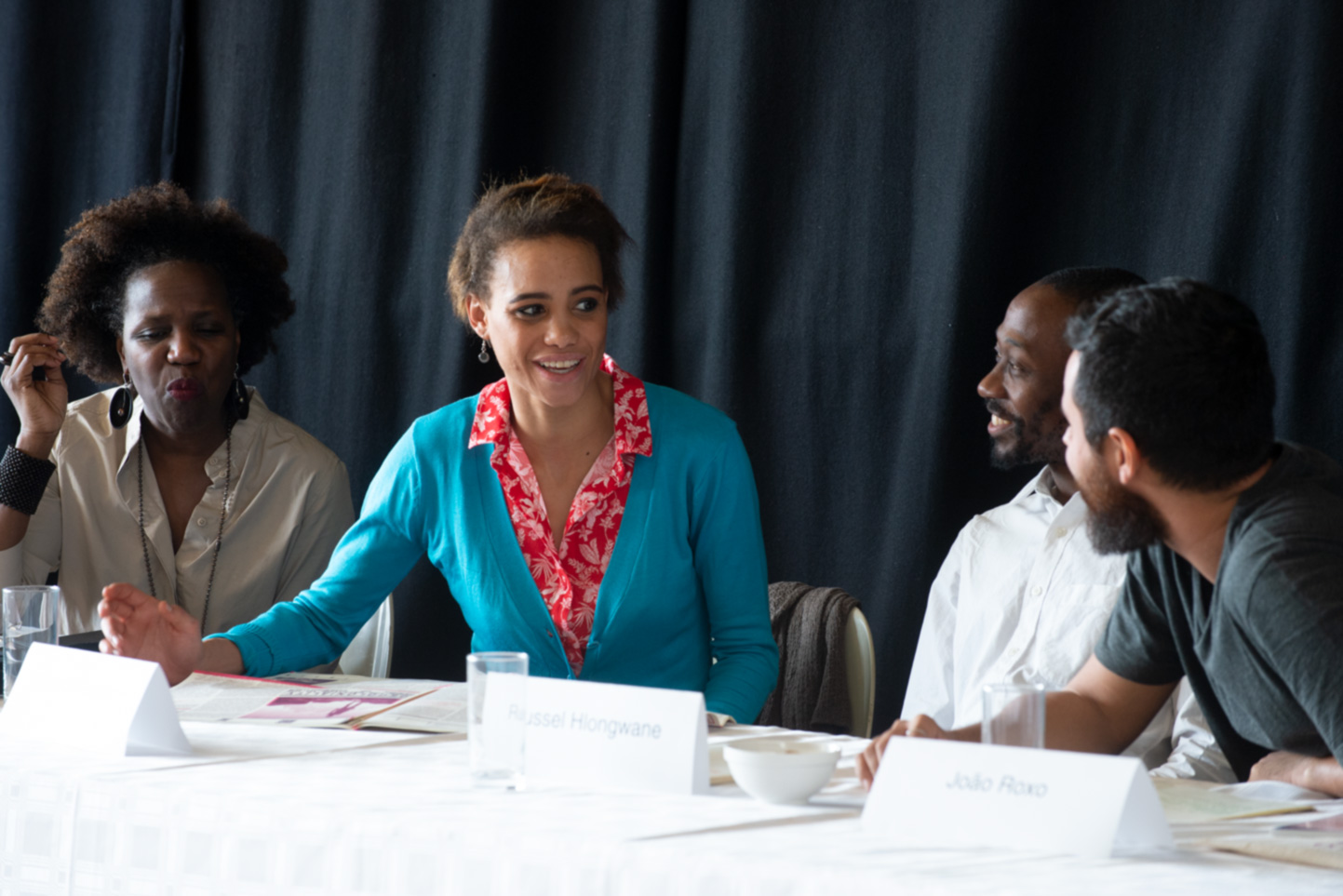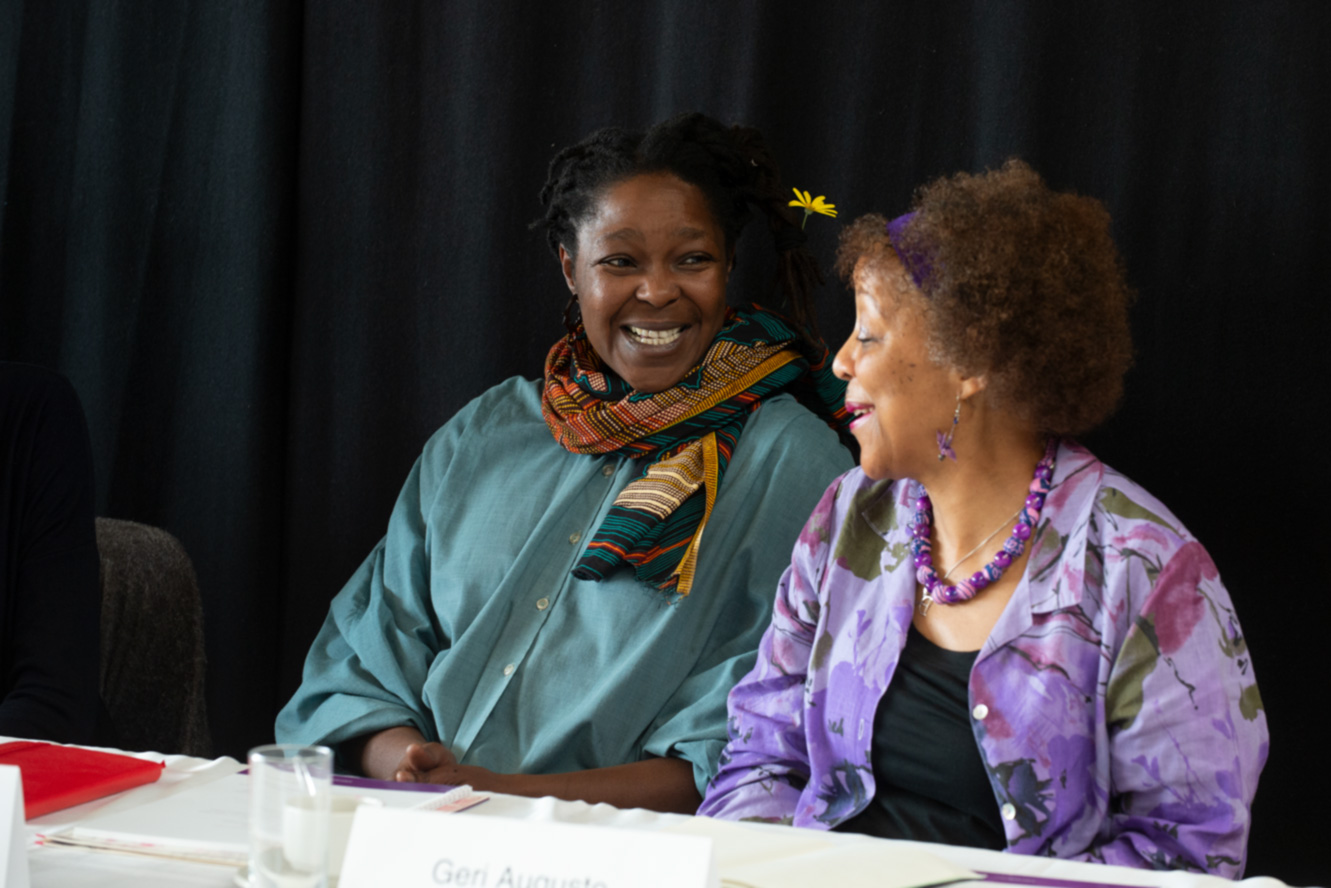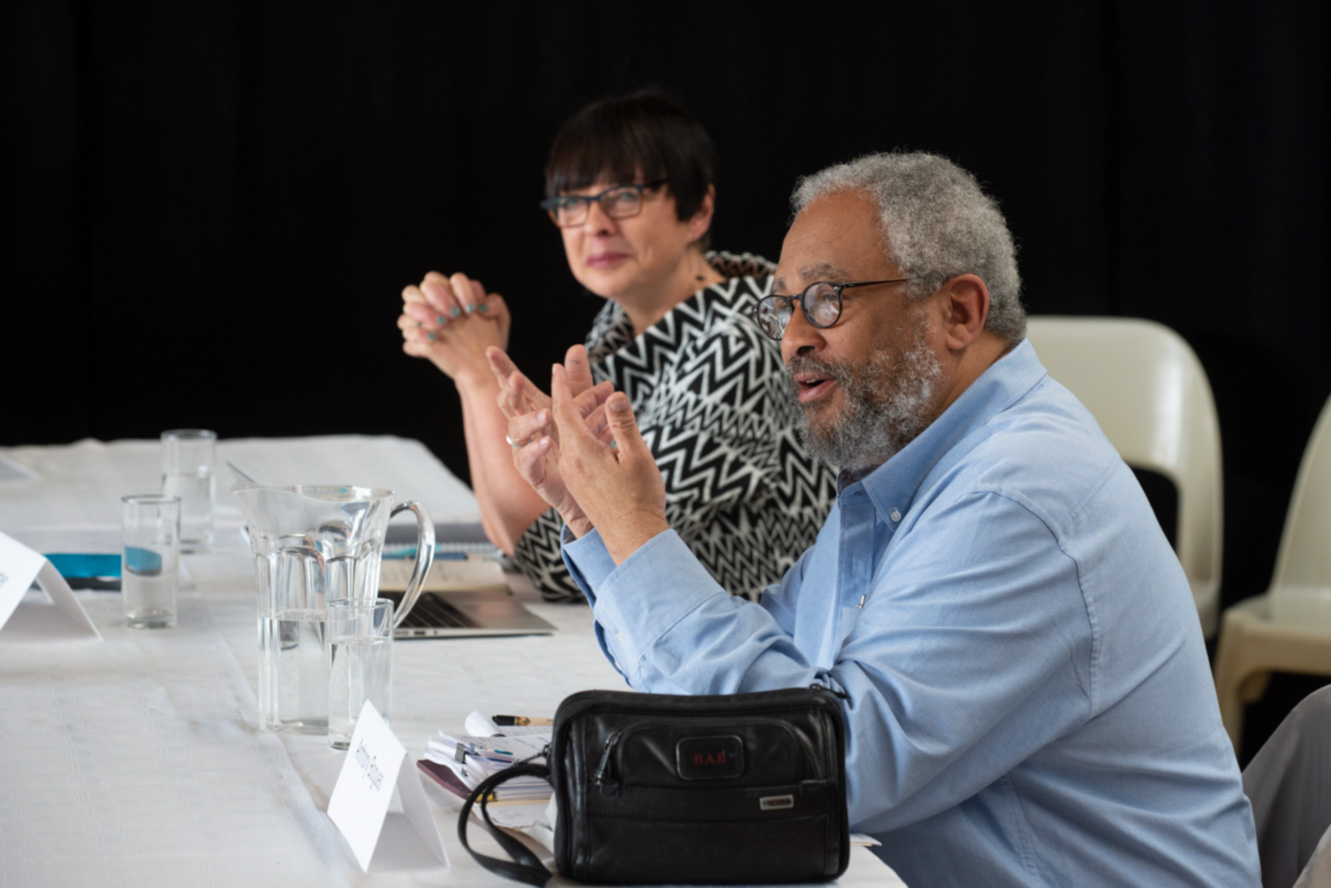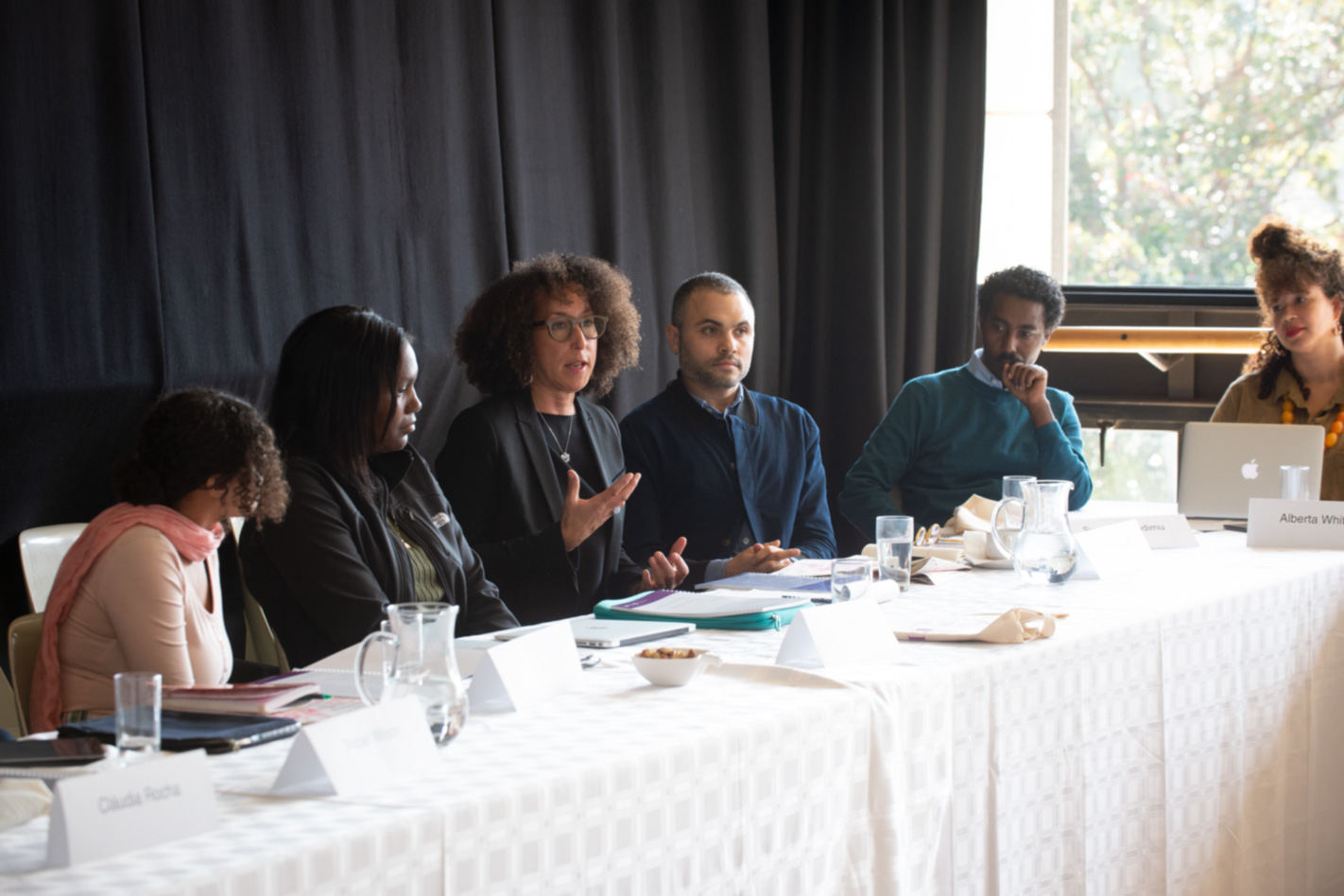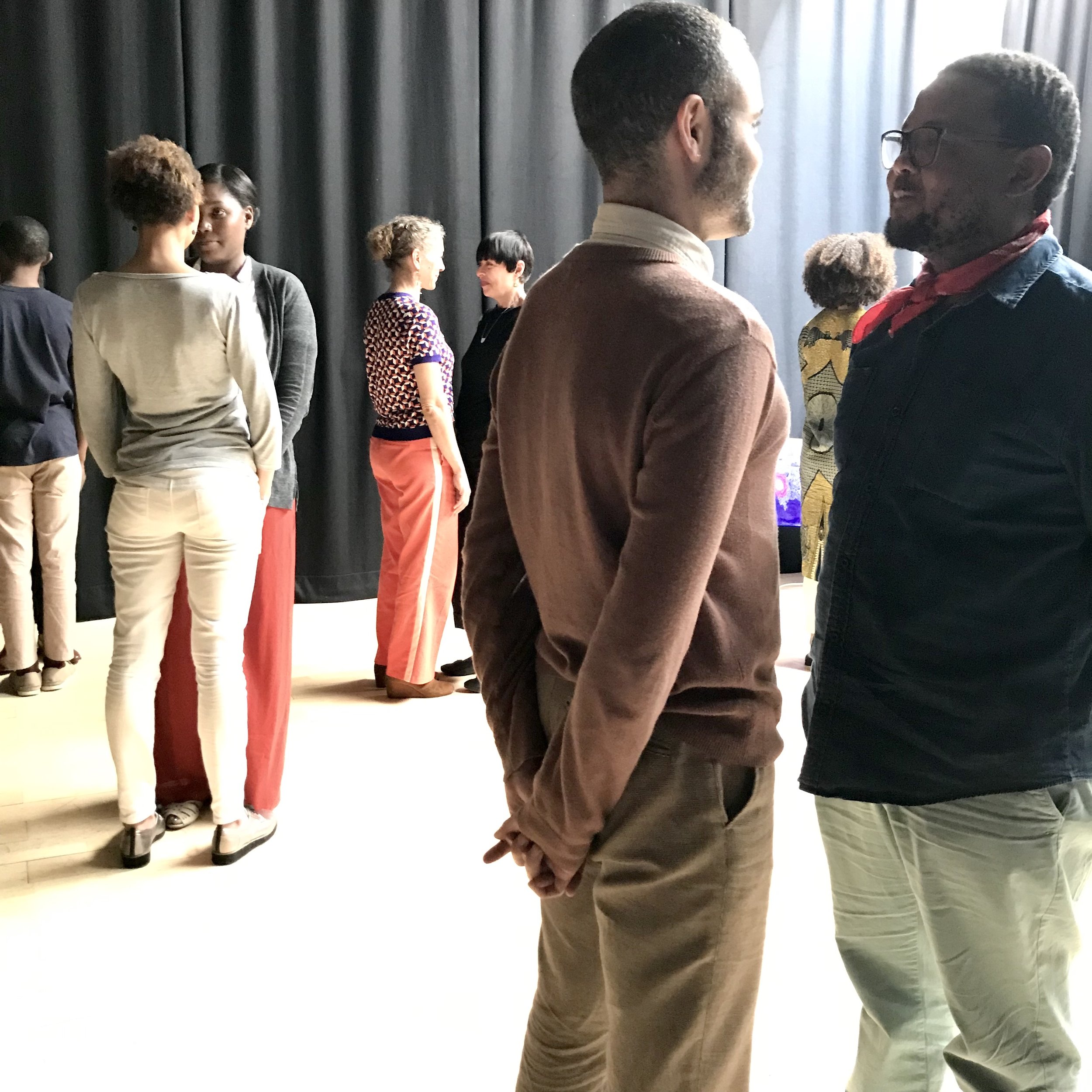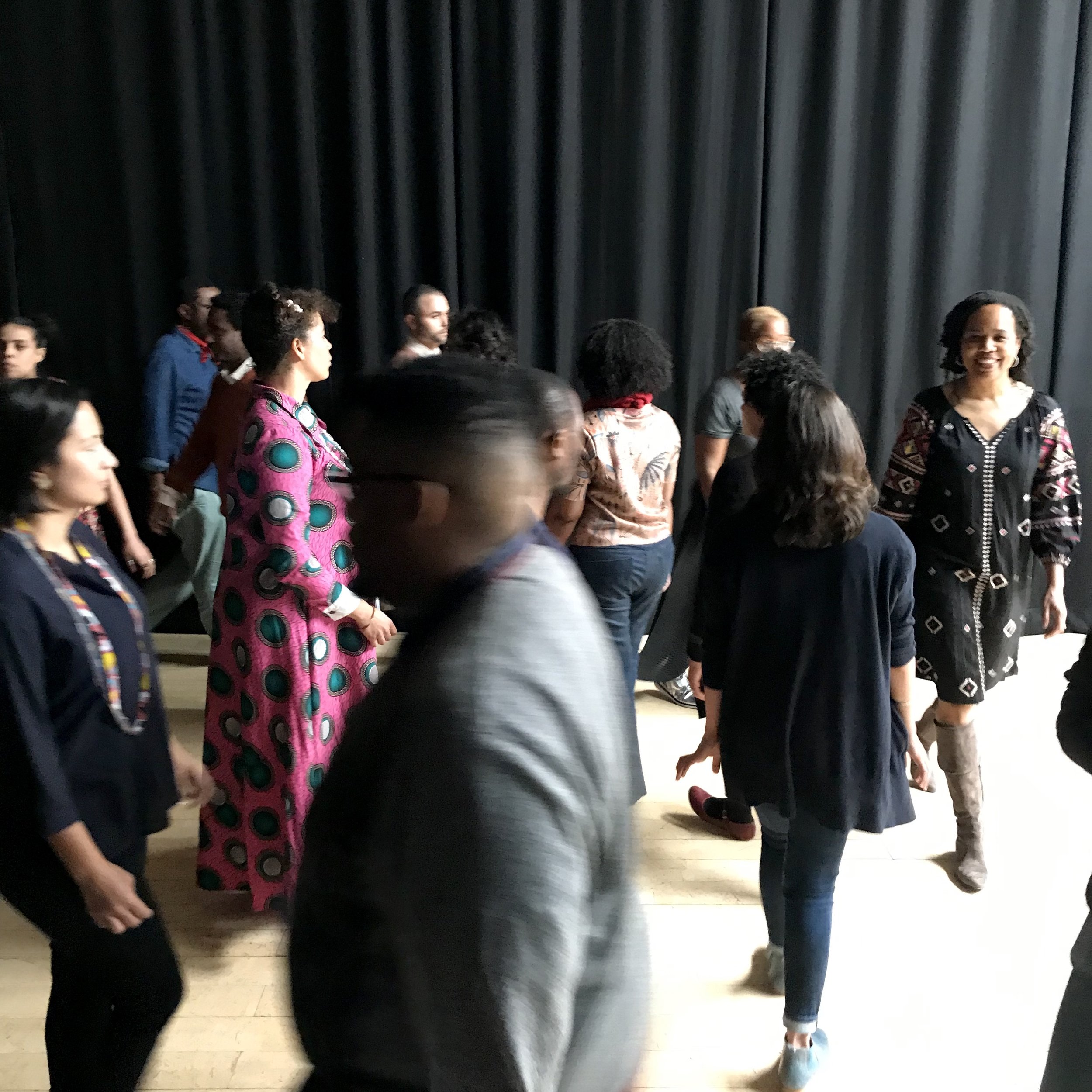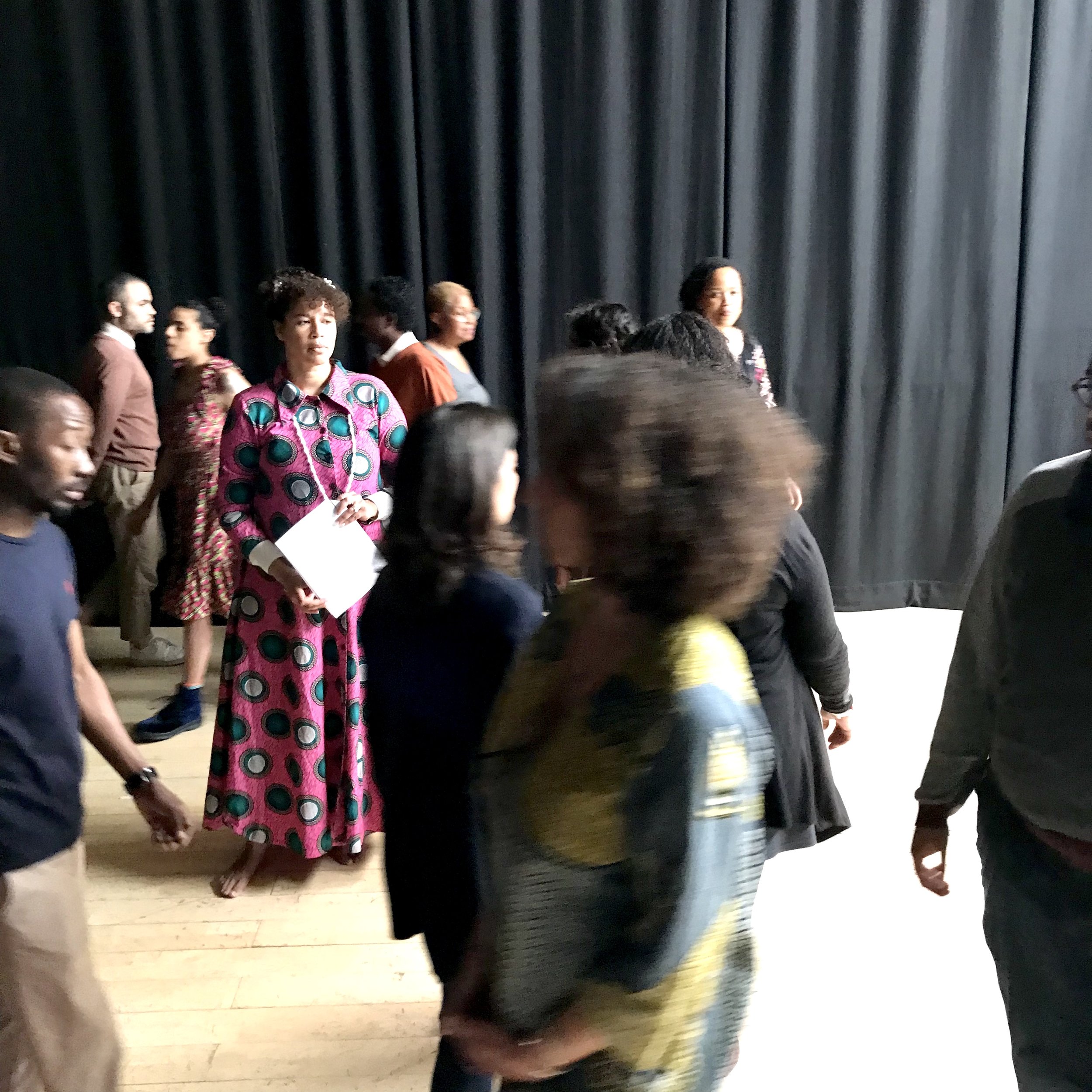_ _ _
“In African and African diasporic art practices we see the possibility of an alternative set of archives, in which histories and possible futures are reconceived, embodied and performed as radical claims to Black life”
Anthony Bogues
The Imagined New | Working through alternative archives is envisioned as a 3-volume, open-access publication in which African and African diasporic art practices are framed as an alternative set of archives, in which intersecting histories, presents and possible futures are (re)conceived, embodied and performed as radical claims to Black life.
Drawn from a series of intensive workshops and art activations hosted by VIAD and the CSSJ in Johannesburg in 2019, Vol I / Art, History & the African Diaspora presents a kind of collective opening statement, a convening of voices calling for a radical rethinking of the archive – or rather, of those alternative archives presented in African and African diasporic art practices and histories.
Published by Iwalewa Books and edited by Surafel Wondimu Abebe, Anthony Bogues, Leora Farber and Zamansele Nsele,the volume will include textual and multimedia contributions by Surafel Wondimu Abebe, Geri Augusto, Thabang Monoa, Nolan Oswald Dennis, Erica Moiyah James, Renée Mussai, Zamansele Nsele, Cláudia Rocha, and François Vergés, as well as a transcribed panel discussion with Johannesburg Art Gallery Chief Curator Khwezi Gule and leading black curators from art museum contexts in South Africa, Brazil and the United States.
Publication with Iwalewa Books is scheduled for 2022. www.iwalewabooks.com
For more information contact:
Lois Anguria / loisa@uj.ac.za
In May 2019 VIAD and the CSSJ gathered a group of thirty scholars, artists, curators and cultural workers from South Africa, Mozambique, Ethiopia, Brazil, the United States and the Caribbean, for a series of intensive workshop sessions. Proposed in the conversations, interventions, performances, incantations and meals that followed was a radical rethinking of the archive – or rather, of alternative archives, as registered in African and African diasporic art practices and histories.
Inflected by the radical Black imagination implied in the overarching idea of The Imagined New (and its corollary, What happens when History is a catastrophe?), key points of discussion centred around Black memory (as performing archives of the imagined new); enactments of refusal (as creative strategies for living otherwise); and the necessary rethinking of African and African diasporic sacral art practices. Convened by CSSJ Director & VIAD Visiting Professor and Curator Anthony Bogues, this multimodal programme was collectively facilitated by Surafel Wondimu Abebe, Geri Augusto, Tina Campt, Khwezi Gule, Saidiya Hartman and Alberta Whittle. Participants included: Surafel Wudime Abebe, Geri Augusto, Anthony Bogues,Tina Campt, Nicola Cloete, Felicia Denaud, Leora Farber, Cheryl Finley, Maiyah Gamble-Rivers, Gabrielle Goliath, Thembinkosi Goniwe, Khwezi Gule, Keitu Gwangwa, Keval Harie, Saidiya Hartman, Russel Hlongwane, Nomvuyo Horwitz, Erica Moiah James, Saarah Jappie, Nikita Keogotsitse, Sharlene Khan, Thomas J. Lax, James Macdonald, Ingrid Masondo, Thabang Monoa,Thato Mogotsi, Farieda Nazier, Zamansele Nsele, Cláudia Rocha, João Roxo, Amie Soudien, Huda Tayob, Deborah Thomas, Alberta Whittle & Nelisiwe Xaba.
THE IMAGINED NEW. Workshop rationale and objectives | Facilitated by Anthony Bogues
Conceiving this gathering was about trying to create a generative space, central to which is what I would like to think about as a certain ‘practice of voice’. This involves a set of practices through which voices can be heard and listened to – enabling a certain collectivity of thinking around different often disparate strands and tributaries, as ways of trying to think about Black life. - Anthony Bogues
LIVING HISTORIES. Black memory as performing archives of the Imagined New | Facilitated by Surafel Wondimu Abebe
It is to history that we owe our frames of reference, our identities and our expressions… I myself carry the sense of this destruction within me for a long time… - James Baldwin
We can see how history comes as a catastrophe, but that catastrophe did not just happen in the past, but has been lingering, not in empty time, as Walter Benjamin says, but within us, in our bodies. So, how can we think of embodied historiography, or what Diana Taylor calls ‘repertoire’? - Surafel Wondimu Abebe
REFUSAL. Black precarity, and creative strategies for Living Otherwise | Facilitated by Tina Campt
How do we think about black life from the perspective of South Africa and the historical catastrophes that have shaped black life here – not just in terms of forces that have seen its domination (in the history of Black life), but also in the ways that Black life has regenerated itself, through the practices of refusal, resistance, radical imagination and creative agency? - Tina Campt
THE EVERYDAY AND ITS OTHER FUTURES. Rethinking African/Diasporic sacral art practices | Facilitated by Geri Augusto, with Keitu Gwangwa
I implore us to think about the translocality of sacral arts. What I want to suggest is that we can’t really think in new insurgent or transgressive ways about the sacral arts we have in mind by thinking of indigenous African religions as somehow disconnected or walled off from indigenous African knowledges. They are intertwined, and you are doing deep epistemic damage if you try to cherry-pick them out, or by interpreting sacral arts without any grounding – if not in the languages then at least in the discourses and the narratives in which they have been created, whether in Africa or the diaspora. - Geri Augusto
MUSEUMS FOR WHOM? MUSEUMS FOR WHAT? | Facilitated by Khwezi Gule
What is interesting for me about state-owned art galleries and museums in South Africa is that they don’t seem to form part of the post-apartheid imaginary ... several things have been overlooked and these include issues of social justice, economic justice and racial justice. I think that these things – that are excluded or suppressed – could offer a different way in which to imagine museums in the historical sense, or in the realm of the visual arts. - Khwezi Gule
CLOSING REFLECTIONS | Facilitated by Saidiya Hartman and Anthony Bogues
How do we engender a polyvocal, nuanced, elastic language of Blackness? What might its grammars be? Is it fungibility? Disposability? Precarity? How do we think of Blackness as generative, as wavered, as fractal? What would this arsenal or treasure trove of concepts, forms, assemblages and modes of practice look like? How do we nurture these radical imaginaries? - Saidiya Hartman

